Tudor mansions and pig swinging – the surprising history of Hackney
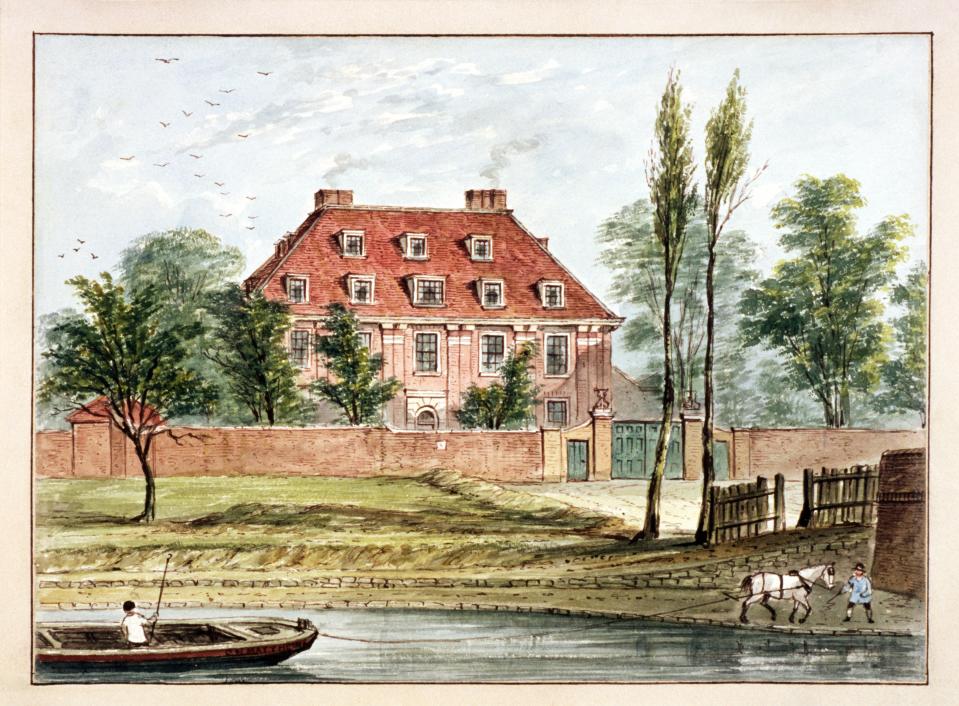
On my debut voyage to Hackney in East London a decade ago I noticed a wall spray-painted with the words “Middle Class Scum F--- Off”. Smack-bang in the middle of gentrified Broadway Market, with its organic cheeses, exotic olives and adverts for baby massages (at £80 a whack), it was a chilling reminder of the social tensions that still gushed beneath the surface of the area’s bruschetta society.
In the eyes of the graffiti artist, this strip in the centre of one of London’s most deprived boroughs was being colonised by bourgeois invaders. And at lightning speed.

Six years earlier, graffiti in that spot had told a very different story: “Broadway Market is not a Sinking Ship, it’s a Submarine”. Looking at all the cocktail bars, galleries, florists and gastro pubs today, it would have been hard for that original scrawler to imagine what Broadway Market would become. But that’s the thing about Hackney: it’s always in a state of flux. And the deeper you delve into its past, the more surprised you’ll be.
Go back 450 years and you’ll find a forgotten Tudor world of gleaming palaces, hunting grounds and bubbling brooks all removed from central London. What we call Hackney today was, in the 16th century, a cluster of small villages in a sea of meadows housing kings, courtiers and aristocrats.
The Tudor upper crust was drawn to Hackney for holidays, hunting and sometimes matters of high state. At King’s Place (later Brooke House) in Clapton, Henry VIII was reconciled with his daughter, the future Bloody Mary, after a frosty five years - he had, after all, divorced her mother and cut her out of the succession. Tragically, the building was ripped down by Hackney Council in the 1950s. At Church House, opposite the medieval church of St Augustine’s (of which only the tower remains today; it is the oldest building in Hackney), Tudor ministers entertained intellectual superstars Erasmus and Thomas More.

Of these rambling Tudor mansions, only one survives: Sutton House in Homerton. Now nestling among sprawling council estates, it was built in 1535 by Sir Ralph Sadleir, a protegé of Thomas Cromwell, and modified in the Jacobean era by a wealthy wool merchant. As its original name Bryk Place suggests, it’s a brick mansion laid out in an E-shape over three storeys. Formerly a squat, it was saved from ruin by the National Trust, who did a superb job of restoring it to its original splendour. You can visit today and see its migraine-inducing Jacobean panelling richly decorated in emerald green, corn yellow, blood red and gold.
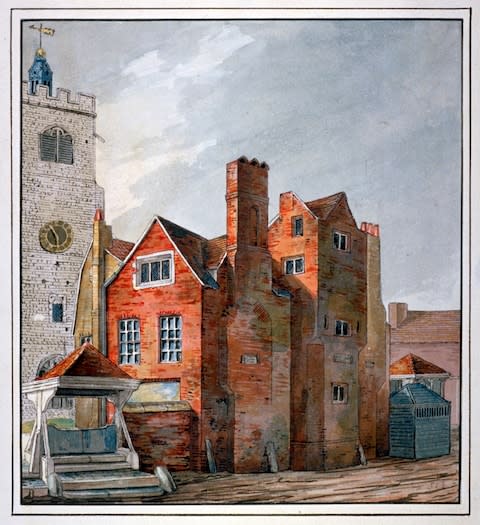
Today, few traces of the area’s aristocratic past survive but its spirit lives on in local London place names. One of the borough’s main thoroughfares is Kingsland Road - originally part of the Roman Ermine Street connecting London to York, and so one of the straightest roads in London. And west of Dalston you can find Boleyn Road, Wolsey Road, and King Henry’s Walk.
Mermaid Fabrics, a tatty shop in Hackney Central, holds further clues about the area’s past. In the era of Samuel Pepys, this was the Mermaid Tavern, boasting a bowling green, pleasure gardens and freak shows. In summer, after negotiating the crazed, filthy streets of the City and Westminster all day, Pepys liked nothing more than to hail a coach at Aldgate, sit back and zoom ‘away into the fields to take the air’ in Hackney, ‘which I every day grow more and more in love with’. By the 1660s, many of Hackney’s aristocrats had been usurped by merchants, bankers and shopkeepers but the villages still oozed wealth and luxury. In the Mermaid Tavern, Pepys sipped ale ‘in the cool of the evening’; played at shuffle-board and, as he recalled on another occasion, would ‘eat cream and good cherries; and so with good refreshment home.’
A post shared by Jessica Ruth Coffin (@jessicaruth148) on Feb 25, 2017 at 5:10am PST
Two particularly exciting things happened to Pepys on his jaunts to Hackney. In the exotic gardens of Brooke House, he saw oranges growing on trees for the first time, and tucked in. And in the Church of St Augustine’s, entranced by sweet organ music, he feasted his eyes on Abigail Vyner, ‘a lady rich in jewels but most in beauty; almost the finest woman that ever I saw’. Wealth, women, ale, cream, oranges and shuffle-board - truly, Pepys had found his Garden of Eden.
By the 18th century, Hackney had grown into a bourgeois paradise. ‘The greatest ambition of the London shopkeeper’, according to Dr Johnson, was ‘to retire to Stratford or Hackney’. Festooned with coffeehouses, bowling greens, assembly rooms and taverns, and with a population of several thousand, Hackney was home to the middle-class elite - including East India Company directors, former mayors of London and Sir Gilbert Heathcote, reputedly the wealthiest commoner in the land. With the Tudor mansions of old crumbling into oblivion, Hackney’s new population housed themselves in elegant, neo-classical townhouses and, from the later 18th century, terraces.
These people worked hard but played even harder. They invented some truly surreal sports, none of which survived to make it into the London Olympics. Horses were routinely plunged into Hackney Marshes and forced to ‘doggy paddle’ across, cheered by the frenzied spectators who’d all placed bets on the race. Outside the Cat and Shoulder of Mutton tavern in London Fields, an activity that would break hundreds of laws today remained in fashion for over 300 years - pig swinging. Each week, the locals would seize one of the many pigs being herded through London Fields to Smithfield meat market, grease its tail, and take turns trying to swing it around their heads.
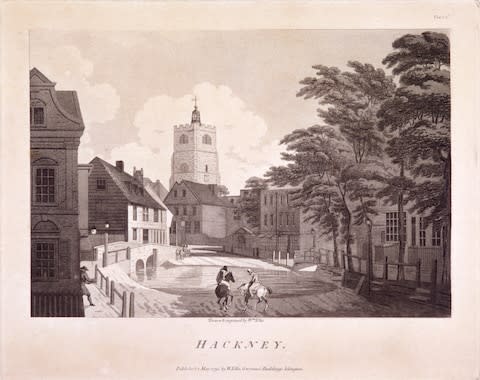
London Fields was also a site for philosophical reflection. Strolling through in 1715, a young Hackney diarist named Dudley Ryder discussed metaphysical philosophy with a friend - in particular, whether the visual plane could be trusted as a faithful manifestation of external reality. En route to Moorfields, the pondering pair would have walked right past the site of the graffitied wall on 21st-century Broadway Market. Evidently, then, the “Middle Class Scum” had been around in Hackney for centuries before 2006.
In the 19th century, the face and fabric of Hackney was transformed beyond imagination. It turned from green to grey. As its population surged from 12,730 in 1801 to nearly 200,000 by the dawn of the 20th century, it was carved up by canals, railways and factories. Formerly a series of disjointed villages outside London, Hackney was gobbled up by the metropolis becoming part of inner-city suburbia, an identity it retains to this day. As the Pewter classes - commuting bank clerks, notaries and solicitors - colonised the area, the wealthier middle classes ran for the hills, turned off by the endless sweeps of terraced housing.
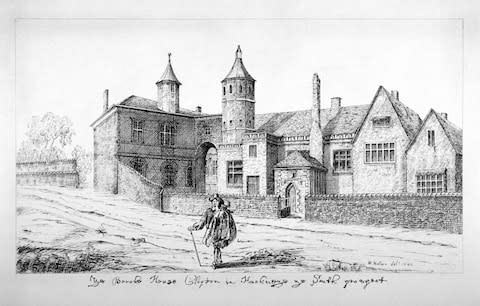
The juggernaut of change thrust forwards into the 20th century, fuelled by Luftwaffe bombs (the first bomb of the First World War fell on Stoke Newington) and, from the late 1940s, waves of immigration - first Afro-Caribbean but latterly Turkish, Kurdish, Vietnamese and Russian. With the establishment of the welfare state after the Second World War, Hackney became a laboratory for social housing experiments. The notorious Holly Street Estate was a mixture of high-rise and ‘snake’ blocks connecting the towers that would be dogged by crime, dereliction and vandalism.
Canvassing in its serpentine corridors in the 1980s, Hackney resident Tony Blair claimed it introduced him to the ‘society of fear’ where people were petrified of opening their doors. The Blairs were just one middle-class family who’d taken a gamble and moved to Hackney in the mid-1980s, triggering both regeneration and resentment in the community. After a 150-year absence, the middle-classes had returned. They set about restoring multi-occupation Georgian and Victorian houses into single-family use, bringing history full-circle.
Outside the Cat and Shoulder of Mutton tavern, an activity that would break hundreds of laws today remained in fashion for over 300 years - pig swinging
What remains is a social, cultural and topographical hotchpotch. Extremes of wealth and poverty are pronounced, not least in places like Broadway Market. It shouldn’t work. Many would say it doesn’t. Years of negative publicity coupled with the memory of the riots on 2011 incline many to think of Hackney as a nightmare world of blaring sirens and gunshots. Others would beg to differ, citing the provocative diversity of Hackney as something to be celebrated rather than stereotyped or condemned. Whatever your viewpoint, the fact remains: following the lows and highs of the riots and the Olympics plenty will be watching to see where Hackney turns next.
Top five historical sights in Hackney
Sutton House, E9 6JQ: A mesmerising Tudor mansion in the heart of Hackney.
The Geffrye Museum, E2 8EA: A museum of interior design from 1600 to the present day.

St Augustine’s Tower, the Narroway, Mare Street E8: Hackney’s sole surviving medieval building.
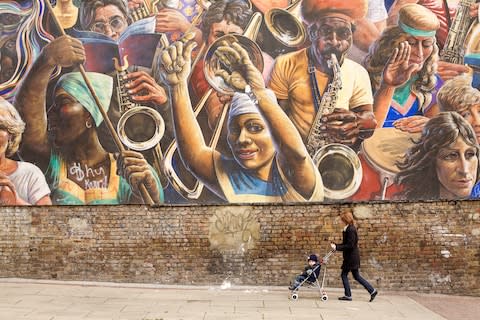
Hackney Museum, E8 1GQ. A diverse collection charting 1,000 years of Hackney history.
The Boris Ltd Warehouse, 87-95 Hertford Road, N1 5AG: A gorgeous relic from Hackney’s industrial past.
Dr Matthew Green is the co-founder of Unreal City Audio and co-author of Hackney: An Uncommon History in Five Parts, edited by Margaret Willes and published by the Hackney Society. Richly illustrated and based on original research, in it historians take social, economic and cultural snapshots of Hackney in 1612, 1712, 1812, 1912 and 2012.

 Yahoo Sport
Yahoo Sport 





































